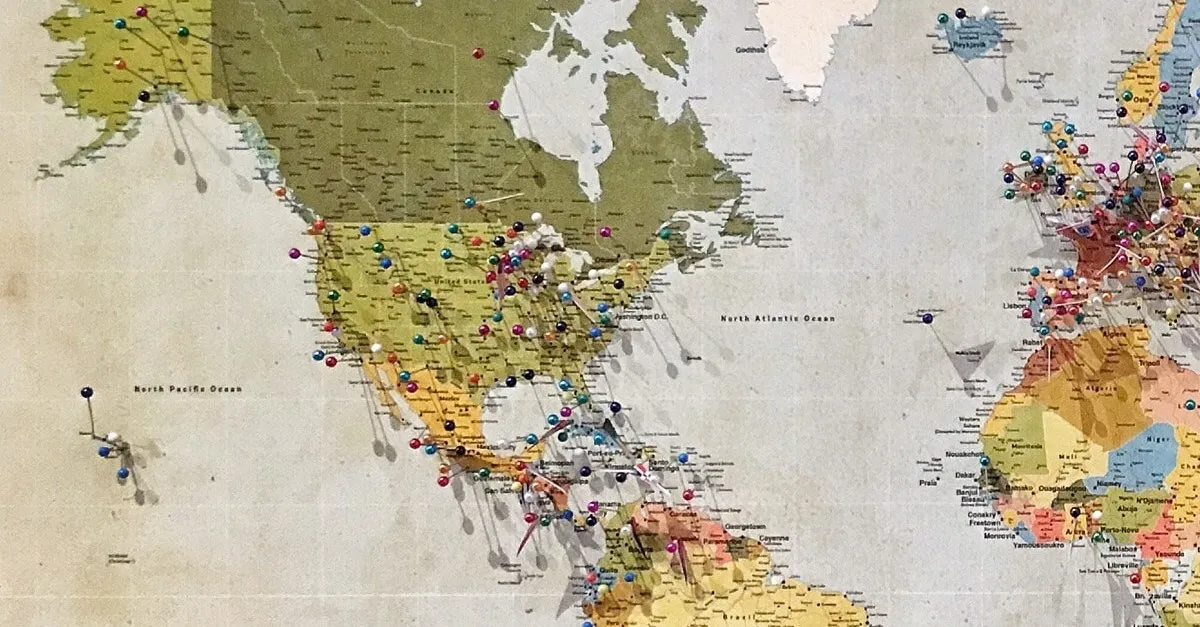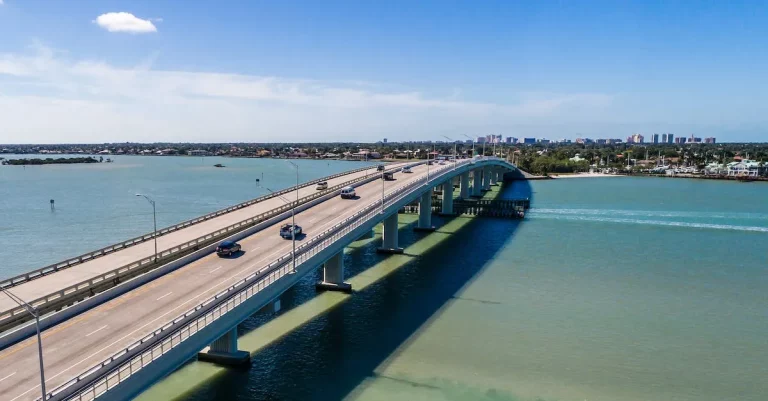How Many Zip Codes Are There In California?
If you’ve ever mailed a letter or package within California, you’ve probably noticed the 5-digit zip code on the address. But have you ever wondered just how many different zip codes there are throughout the entire state? With a large and diverse population spread across 58 counties, California is home to a multitude of cities, towns, and communities. So how many zip codes does it take to cover them all?
If you’re short on time, here’s a quick answer to your question: There are approximately 1,792 zip codes in use in California as of 2023.
In this comprehensive guide, we’ll dive into the specifics on California zip codes. We’ll look at how they are assigned, who oversees them, how many active codes there are, and some interesting facts and figures about California’s zip code system. We’ll also provide a breakdown by county and region so you can get an idea of how vast the zip code network is throughout the state.
What Are Zip Codes and How Are They Assigned?
Zip codes are a system of postal codes used by the United States Postal Service (USPS) to efficiently route mail to specific geographic regions. Each zip code is a unique combination of five digits, with additional four-digit extensions for more specific locations.
Zip codes are used not only for mailing purposes, but also for various other applications such as demographic analysis, marketing, and delivery services.
Definition and Purpose of Zip Codes
The term “ZIP” in zip code stands for “Zone Improvement Plan.” The system was introduced by the USPS in 1963 to improve the efficiency of mail delivery. By assigning unique codes to different areas, the USPS can easily sort and route mail, ensuring that it reaches its intended destination in a timely manner.
Zip codes are designed to provide a structured hierarchy for organizing geographic regions. The first digit of a zip code generally represents a broad geographic area, such as a state or a group of states.
As you move through the digits, the code becomes more specific, narrowing down to a particular city, town, or neighborhood.
Zip Code Boundaries and Assignment Process
The boundaries of zip codes are determined based on geographic features, such as streets, highways, rivers, or other natural or man-made landmarks. These boundaries are regularly reviewed and updated to accommodate changes in population, infrastructure, and development.
The assignment of zip codes is the responsibility of the USPS. When a new development or area is established, the USPS assigns a unique zip code to that location. The assignment process takes into account factors such as population density, postal service capacity, and the need for efficient mail delivery.
It’s worth noting that zip codes are not always contiguous. In some cases, a single zip code may cover multiple non-adjacent areas. This can occur when neighboring regions share a postal facility or when there is a need to maintain consistency in mail delivery routes.
For more information on zip codes and their assignment, you can visit the official USPS website at www.usps.com.
Zip Codes in California: Key Stats and Facts
Total Number of Zip Codes
California is a vast state with a diverse population and a wide range of geographical regions. As such, it comes as no surprise that it is home to a significant number of zip codes. In fact, California has one of the highest numbers of zip codes in the United States.
According to the United States Postal Service (USPS), there are currently over 2,600 zip codes in California. This extensive network of zip codes allows for efficient mail delivery and helps to organize and identify different areas within the state.
Zip Codes by Region
The zip codes in California are spread across different regions, each with its own unique characteristics and demographics. The state can be broadly divided into several regions, including Northern California, Southern California, Central Valley, and the Greater Los Angeles Area.
Each region is further divided into counties and cities, with zip codes assigned to specific areas within them.
For example, in Northern California, zip codes cover major cities such as San Francisco, Sacramento, and Oakland, as well as smaller towns and rural areas. In Southern California, zip codes include those for Los Angeles, San Diego, and Anaheim, among others.
The Central Valley, known for its agricultural productivity, also has its own set of zip codes, while the Greater Los Angeles Area encompasses a vast number of zip codes due to its immense size and population.
Interesting Facts About California Zip Codes
- 90001 is the zip code for the city of Los Angeles, making it the most populous zip code in the state.
- The zip code 90210 has become iconic due to its association with the affluent Beverly Hills neighborhood.
- California is also home to some unique zip codes, such as 93544, which covers the unincorporated community of Llano in Los Angeles County.
- The zip code 94109 in San Francisco is known for being the location of the famous Lombard Street, often referred to as the “crookedest street” in the world.
It’s important to note that zip codes are not limited to residential areas. They also cover commercial and industrial areas, allowing for efficient mail and package delivery to businesses across the state.
The extensive network of zip codes in California plays a crucial role in facilitating communication and commerce within the state.
For more information on zip codes in California, you can visit the official website of the United States Postal Service: https://www.usps.com/.
Zip Codes in Major California Cities and Regions
Los Angeles Metro Area
The Los Angeles metro area is one of the most populous regions in California, and it is home to a large number of zip codes. With over 18 million residents, this bustling area encompasses cities like Los Angeles, Long Beach, and Santa Ana.
In fact, there are more than 300 zip codes in the Los Angeles metro area alone, each serving different neighborhoods and communities.
San Francisco Bay Area
The San Francisco Bay Area is known for its vibrant tech industry, diverse culture, and stunning scenery. This region includes cities such as San Francisco, Oakland, and San Jose. With a population of over 7 million people, the Bay Area is comprised of numerous zip codes, totaling more than 100.
From the bustling streets of San Francisco to the peaceful neighborhoods of Palo Alto, each area has its own unique zip code.
Central Valley
The Central Valley is a vast agricultural region located in the heart of California. Spanning over 400 miles, this area is home to cities like Fresno, Bakersfield, and Stockton. With its large agricultural industry and growing population, the Central Valley has numerous zip codes to accommodate its residents.
While the exact number of zip codes in this region is not readily available, it is safe to say that there are many.
San Diego County
San Diego County is a southern California gem, known for its beautiful beaches, mild climate, and vibrant cultural scene. From the vibrant downtown area to the relaxed beach towns, San Diego County has a diverse range of neighborhoods.
With a population of over 3 million, this county is serviced by more than 100 zip codes. Each zip code represents a different area within San Diego County, catering to the specific needs and characteristics of each neighborhood.
Sacramento Area
The Sacramento area, also known as the Greater Sacramento Region, is the capital of California. It encompasses cities like Sacramento, Roseville, and Elk Grove. With a population of over 2 million people, this region has a number of zip codes to serve its residents.
While the exact count of zip codes in the Sacramento area is not readily available, it is estimated to be over 50. Each zip code represents a different area within the region, providing services and amenities tailored to the needs of its residents.
Finding, Searching, and Understanding Zip Codes
Zip codes are essential for organizing and delivering mail efficiently. They help to identify specific regions, neighborhoods, and even individual streets in a particular area. In California, with its vast size and diverse population, zip codes play a crucial role in facilitating mail delivery and other essential services.
Looking Up Zip Codes Online
Searching for zip codes in California has become incredibly easy with the advent of online tools and databases. Numerous websites provide free zip code lookup services, allowing users to find zip codes for specific addresses or search for zip codes within a certain area.
Some popular online resources include zip-codes.com, USPS, and USPS Zip Code Lookup.
These websites usually offer user-friendly interfaces, where you can input an address, city, or even a landmark to obtain the corresponding zip code. Additionally, they often provide additional information, such as the county, time zone, and latitude/longitude coordinates associated with the zip code.
What Different Zip Code Digits Signify
Zip codes consist of five digits, but did you know that each digit in a zip code carries its own significance? The first digit of a zip code represents a broad geographic region within California. For example, zip codes that start with “9” are usually found in the northern part of the state, while those starting with “9” are typically in the southern region.
The second and third digits further narrow down the location, indicating specific cities or towns. For instance, zip codes beginning with “95” are generally associated with the city of Los Angeles, while zip codes starting with “94” are likely to be found in San Diego.
The last two digits of a zip code denote more specific areas, such as neighborhoods, streets, or even specific buildings. These digits help to pinpoint the exact location within a city or town.
Unique Zip Codes vs Shared Zip Codes
While most zip codes in California are unique to a specific area, there are cases where multiple cities or towns share the same zip code. This usually occurs when neighboring areas have a small population or limited mail volume, making it more efficient to consolidate mail delivery services.
Shared zip codes can sometimes lead to confusion, as different cities may have the same zip code. However, it’s important to note that shared zip codes do not necessarily indicate that the cities are the same or even adjacent to each other.
When sending mail or packages to a shared zip code, it’s essential to include the city or town name to ensure accurate delivery.
Understanding zip codes in California is not only helpful for sending mail but also for various purposes such as mapping, demographic analysis, and organizing business operations. By knowing how to find, search, and interpret zip codes, you can navigate the vast Californian landscape with ease and efficiency.
Conclusion
In closing, while we often take zip codes for granted, they play an important role in organizing, routing, and delivering mail across California’s vast landscape. With nearly 1,800 active codes blanketing the state, the zip code system helps connect the state’s businesses, residents, and communities. The next time you jot down a zip code, remember just how much planning and coordination goes on behind the scenes to make mail delivery possible! We hope this overview gave you some useful insight into how many zip codes there are in California and how they work.








